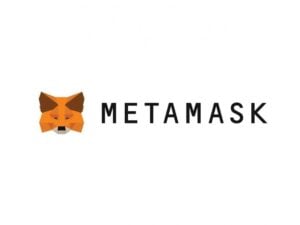In this column dedicated to the latest news on the Metaverse Blockchain, two projects emerge. On one hand, the launch of HTC’s no-code platform Viverse Create, dedicated to developers and creators without experience. On the other hand, the collaboration of Wētā Workshop from The Lord of the Rings with the Lamina1 blockchain, to launch a new narrative on the metaverse.
Metaverse on blockchain news: the new no-code platform Viverse Create by HTC
HTC, a technology company from Taiwan, has launched a new experience of world and game creation: “Viverse Create”.
This is a no-code platform that allows all users to create multiplayer experiences within the Viverse metaverse, even for those who are not developers.
Unleash your creativity with a new way to build and explore virtual spaces. VIVERSE Create is the spatial computing platform for seamless no-code World-building, exploration, and gaming.
https://t.co/ala9p53I0v#htcvive #viverse #ceate pic.twitter.com/9G4J9TIpWd
— HTC VIVE (@htcvive) August 22, 2024
“Unleash your creativity with a new way to build and explore virtual spaces. VIVERSE Create is the spatial computing platform for building, exploring, and playing in no-code worlds.”
In practice, the new creations by users developed on Viverse Create can be shared on all HTC devices, such as Virtual Reality (VR) headsets, but also mobile phone, PC, or Mac.
A peculiarity of Viverse Create could precisely be that of bridging the gap between professional developers and those who wish to immerse themselves in the realm of virtual world creation.
Not only that, with Viverse Create, HTC guarantees the simplicity of sharing new experiences created by users, without requiring any installations, but using a single secure link.
Metaverse on blockchain news: Wētā Workshop and Lamina1 and the new project
Another Metaverse project on the blockchain horizon involves Wētā Workshop, known for building the world of The Lord of the Rings films, and Neal Stephenson’s Web3 company Lamina1.
According to what has been reported, the two are working on a new project (still untitled) of interactive storytelling, created directly on Lamina1.
This experience will give rise to a new standard for the development of intellectual property and world-building, through immersive experiences that incorporate the action and contributions of the fans.
In fact, at the moment, fans are invited to uncover the story behind a mysterious set of “Artefatti” that will be based on the themes and the story of Stephenson’s catalog of works.
Immediately after, the superfan will take on the new role of creator, using their discoveries to directly contribute to the expansion of the universe and own a piece of history.
#Artefact isn’t just another content launch by two well-known creators. The upcoming collab between @nealstephenson & @wetaworkshop will serve as the first showcase of a major multimedia property launching on LAMINA1.
Dive deep in @geekwire & share your thoughts below
https://t.co/kxTpZdQGt8
— LAMINA1 (@Lamina1official) August 22, 2024
“#Artefact is not just another content release by two well-known creators. The upcoming collaboration between @nealstephenson & @wetaworkshop will be the first showcase of a major multimedia property that will be launched on LAMINA1.”
On one hand, Lamina1 has been working for years on its Web3 platform and blockchain protocol to incubate, distribute, and monetize the next generation of digital content for creators.
On the other hand, Wētā Workshop is a special effects and design company that director Peter Jackson created for the film trilogy of The Lord of the Rings. It has also worked on projects like Blade Runner 2049 and Avatar.
The largest companies in the world by market cap attracted by the metaverse
Apparently, the metaverse continues to attract the operations of the largest companies in the world in terms of market cap, despite many claiming that the sector is in sharp decline. In fact, Apple, Google, Meta, Microsoft, and Nvidia continue to develop new devices for the metaverse.
Among the latest news, there is the one concerning Microsoft which, in partnership with Samsung, should engage in the production of OLED panels that could power a new line of headsets for mixed reality.
On this news, not much is known yet, except that mass production will not start before 2026. In any case, what is possible is that this new device from Microsoft wants to challenge Apple’s Vision Pro headphones and push its applications towards the Meta Quest headset.
Even Google is coming off a new collaboration in the metaverse, with the company Magic Leap, with the aim of offering more immersive experiences and promoting the AR/XR ecosystem. Not surprisingly, Magic Leap has released a head-mounted augmented reality display called Magic Leap One, which overlays computer-generated 3D images onto real-world objects.









